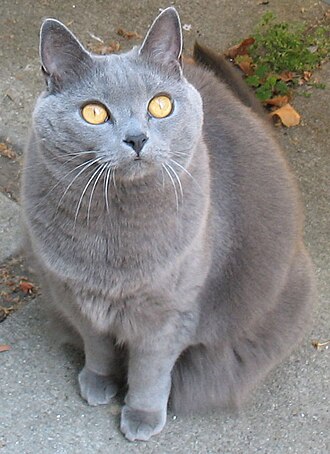AY Honors/Cats - Advanced/Answer Key
1 Have the basic Cat Honor.
2. Know about cats "open-book" quiz. (This is not an instructional pass-a-test requirement, it is designed to encourage research into the world of cats.) Enjoy new discoveries as you research the following questions about some unusual domestic cat breeds from around the world.
a. The domestic cat known as Sphynx first appeared in the late 1960s. Which of the following is true about this Canadian breed?
(1) It is too wild to be a proper house cat.
(2) It is the national pet of Canada.
(3) It appears to be hairless.
The Sphynx (aka Canadian Hairless) is a rare breed of cat with extremely little fur, or at most a short fuzz over its body, and no, or very short and stiff whiskers. Their skin is the color their fur would be, and all the usual cat marking patterns (solid, point, van, tabby, tortie, etc) may be found in Sphynx too. They are sometimes mistaken for Chihuahuas because of their extremely unusual and, some say, uncatlike appearance. They are extremely intelligent, extroverted, and affectionate, often cuddling with their owners, other humans, and each other.
b. True or False: The Chartreux, with its brilliant orange eyes and blue lips, is a breed closely associated with France.
True.
The Chartreux is an internationally recognized breed of domestic cat from France. There is a legend that the Chartreux are descended from cats brought to France by Carthusian monks to live in the order's head monastery, the Grande Chartreuse, located in the Chartreuse Mountains north of the city of Grenoble (Siegal 1997:27). But in 1972, the Prior of the Grande Chartreuse denied that the monastery's archives held any records of the monks' use of any breed of cat resembling the Chartreux (Simonnet 1990:36–37). Legend also has it that the Chartreux's ancestors were feral mountain cats from what is now Syria, brought back to France by returning Crusaders in the 13th century, many of whom entered the Carthusian monastic order. The first documented mention of the breed was by the French naturalist Buffon in the 17th century. The breed was largely decimated during the first World War and wild populations were not seen after World War Two. A concerted effort by European breeders kept the breed from extinction. The first Chartreux were brought to the USA in 1971 by Helen and John Gammon of La Jolla, California. There are fewer than two dozen active Chartreux breeders in North America as of 2007.

